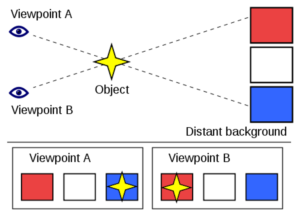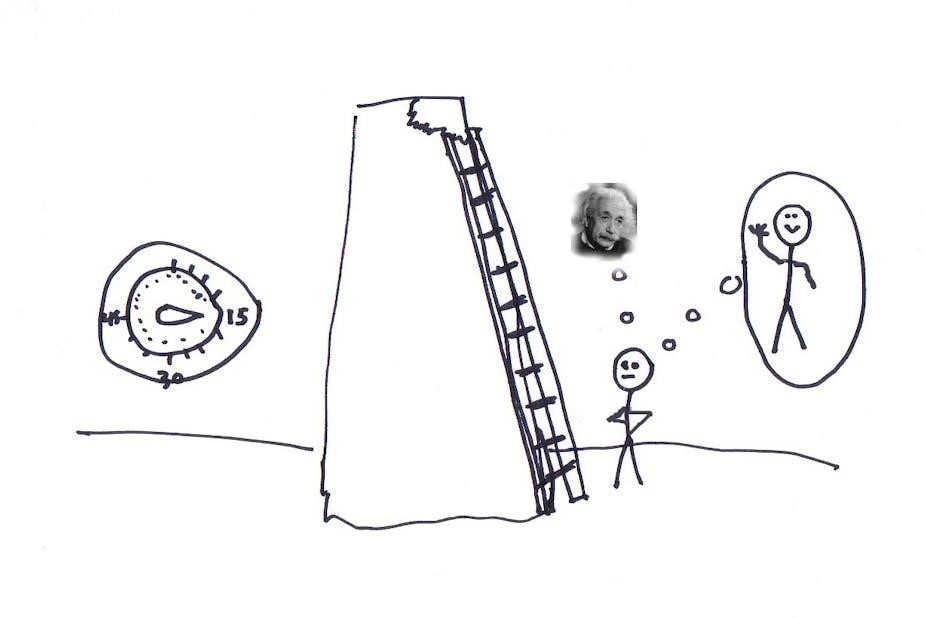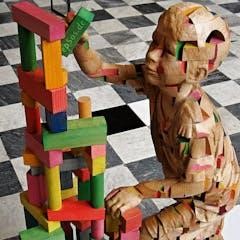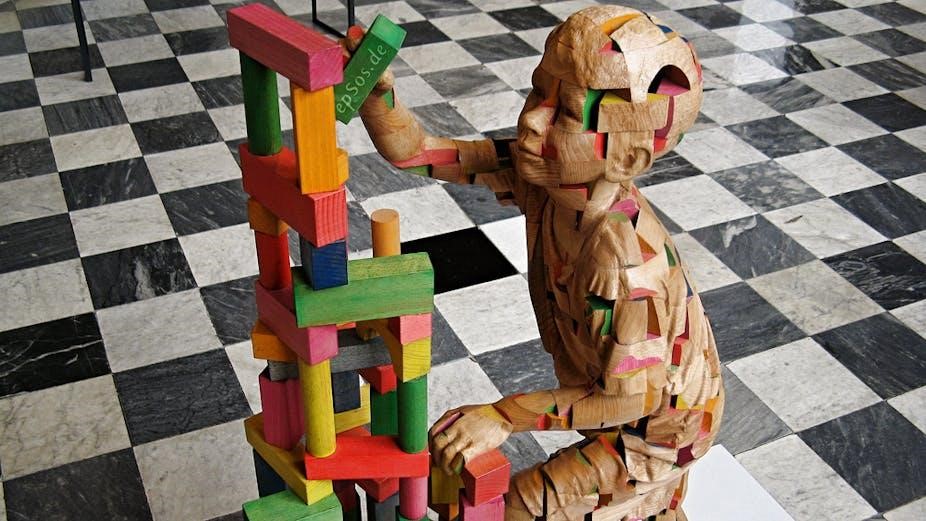Australia faces many big challenges – in the economy, health, energy, water, climate change, infrastructure, sustainable agriculture and the preservation of our precious biodiversity.
To meet these, we need creative scientists and engineers drawn from many disciplines, and a technologically-skilled workforce.
The many world-changing advances and achievements of Australian research and development (R&D) are encouraging. Indeed, the Australian Academy of Science, of which I’m president, believes our country’s scientific potential has never been greater.
But our ability to improve this performance in the future, or even maintain it, is not assured.
Four things threaten our ongoing R&D performance and, as a consequence, our economic security and prosperity, and I’ll address each of these in turn.
1) The level of investment in R&D
Over the past decade, successive Australian governments have recognised the need to properly invest in research and innovation.
Total investment by the current government has increased by almost 43%, and is projected to amount to $9.4 billion dollars over the current financial year. This is very commendable.
It’s heartening to see Australia’s business sector is also increasing its investment – although admittedly this boost is coming off a low base compared to many other OECD nations. (Australia ranks 14th for business expenditure on R&D as a percentage of GDP).
But to remain competitive internationally we need even greater investment.
Australia spends around 2.2% of its GDP (around AU$900 per person per year) on research and development.
Iceland, the next best-ranked country, devotes 2.6% cent of GDP. Top of the list is Israel, with 4.6%, followed by Finland and Sweden, each of which spend 3.6%.
We have around 92,000 full-time equivalent researchers which, again, is only middle order. According to the OECD, in 2008 the proportion of R&D personnel in our total labour force puts Australia 16th, well short of Canada, which ranks ninth.
China has more than 1.6 million people working on research and development, a number that’s increasing rapidly. (China is ranked 33rd, with 2.5 R&D personnel per thousand in the workforce, from a total population of 1.3 billion)
Worryingly, Australia sits well within the bottom half of OECD countries (ranked 20th of 30) when it comes to the number of university graduates emerging with a science or engineering degree per capita.
These are sobering statistics.
The Australian Academy of Science therefore calls on the government to create a Sovereign Fund for Science, to secure the future prosperity of the nation.
The goal should be to increase Australia’s research and development expenditure to at least 3% of GDP by 2020.
2) International collaboration
By its very nature, science is a collaborative enterprise. It transcends generations, individual scientific disciplines and, increasingly, national boundaries. To paraphrase Sir Isaac Newton, we see further by standing on the shoulders of giants.
Australia produces only 2% of the world’s knowledge. To gain access to the other 98%, we must ensure our scientists are well-connected internationally.
Getting involved with major international projects at inception allows Australia to stay abreast of new scientific developments, to have a say in their direction, to take the knowledge further, and to apply it.
International collaborations also attract scientists from overseas to spend time in Australia, bringing us new skills and knowledge. Importantly, many return and become part of our scientific workforce.
Work arising from such collaborations often attracts great attention and gets cited more frequently. Take the recently announced kangaroo genome sequence, which garnered international media attention.
This work was done by a consortium of more than 100 researchers from Australia, the US, the UK, Germany and Japan, headed by my friend and Academy colleague Professor Marilyn Renfree. The “kangaroo” was in fact the Tammar wallaby.
Its genome is yielding many unexpected insights that may have significance for humans as well as for wallabies – for example the genes that make antibiotics in the mother’s milk to protect the tiny newborns from harmful bacteria.
There are many such examples.
We hope to bring international astronomers to Australia by winning the bid to build a giant collection of radio telescopes in the Western Australian desert. Known as the Square Kilometre Array, or SKA, this international project – which could go to either South Africa or Australia – will give astronomers huge insights into the formation and evolution of the first stars and galaxies after the Big Bang.
Barriers that have impeded the use of Australian research grants for international collaborations are being dismantled.
Today many grants and fellowships provided by the Australian Research Council, National Health and Medical Research Council and CSIRO support projects that include international partners.
Many of these linkages were initially catalysed by the federal government’s International Science Linkages (or ISL) program.
With funding of about $10 million per year, the ISL program has supported bilateral and multilateral relations with many other countries.
Regrettably, the ten-year program ended in June this year as funding was not renewed in the 2011-2012 Budget.
Put simply, it would be a grave blow if our ability to compete on the international stage were to be diminished.
I strongly urge the Federal Government to fund in its next Budget a new program to provide strategic support for Australia’s International Science Linkages.
3) Science capability in the workforce
We are a lucky nation: we have access to immense mineral wealth. But resources are finite. Even the minerals sector acknowledges that we cannot ride the current boom indefinitely.
Further, the Minerals Council of Australia warns skills shortages and structural weaknesses in the Australian economy have been masked by the boom.
And so, when the end of the mining boom comes, where will Australia be?
There is broad consensus among minds more economically astute than mine that our future prosperity will depend upon:
- a skilled workforce
- innovation
- entrepreneurship
- high productivity
- the creation of the kind of knowledge-intensive goods and services that can only result from robust research and development.
Certain skills are already in short supply in Australia.
In fact, the No More Excuses report issued by the Industry Skills Council earlier this year points to an alarming deficit in even basic skills.
According to that report, “millions of Australians have insufficient language, literacy and numeracy skills to benefit fully from training or to participate effectively at work”.
A recent project looking at the maths skills of bricklaying apprentices at a regional TAFE showed:
- 75% could not do basic arithmetic.
- 80% could not calculate the area of a rectangle, or the pay owed for working four-and-a-half hours.
Such figures are particularly worrying at a time when the demand for higher-level skills is increasing.
It’s essential we act now to ease the bottleneck and put in place measures that will create the technologically-competent workforce we need for the future.
We can, and should, be “the clever country”. But this will only happen if we place appropriate emphasis on properly educating our young people.
4) Science and maths education
Without a robust and inspiring science and maths education system, it’s impossible to create an internationally-competitive workforce.
Myriad jobs – apart from the obvious research, engineering and technology careers – require a basic understanding of science and maths.
And, as a parent, a mentor of young scientists and a passionate advocate for quality education, I know that all children are natural born scientists.
“Why?”, “How?”, and “What happens if …?” are questions asked frequently by young children, whose natural spirit of inquiry is crucial to understanding the big exciting world around them.
We need to harness this natural curiosity and nurture it with inspiring education.
Australian public expenditure on education as a percentage of GDP is just 4.2% – significantly below the OECD average of 5.4%.
A decade ago, a review of Australian science education, revealed many students were disappointed with their high school science.
Today, this disenchantment continues, as evidenced by the declining number of students choosing to study science in senior secondary school. Consider the following:
- In 1991, more than a third of Year 12 students chose to study biology. That now sits at less than a quarter.
- 23% of Year 12 students studied chemistry ten years ago, compared with 18% now.
- In the same period, physics has fallen from 21% to 14%.
While Australian students have been losing interest in science, their international peers have been taking it up with great enthusiasm.
The OECD Program for International Student Assessment (PISA) examines the scientific literacy of teenagers in 57 different countries.
In 2000, the only nations that performed better than Australia were Korea and Japan. In 2009 – the most recent figures available – Australia ranked behind Shanghai, Finland, Hong Kong, Singapore, Japan and Korea.
What happened? The Assessment indicated that the performance of other countries has improved while Australia’s has remained stationary.
Maths
Australia’s early secondary mathematical literacy scores have significantly declined over the last decade. Our Year 4 and Year 8 students ranked 14th internationally in the most recent Trends International Mathematics and Science Study, conducted in 2007.
The decline in Australia’s mathematical literacy is of grave concern because mathematics is an enabling science, without which it’s not possible to make use of other sciences – either in the lab or in the workforce.
A recent survey conducted by Science and Technology Australia and the Academy of Science showed Australians clearly value science – 80% of respondents acknowledged science education is absolutely essential or very important to the national economy.
But it also revealed some alarming holes in the basic science understanding of the average Australian.
- Three in ten believe humans were around at the time of dinosaurs.
- More than a fifth of our university graduates think that it takes just one day for the Earth to travel around the sun.
- Almost a third of Australians do not think evolution is currently occurring.
- About a quarter say human activity is not influencing the evolution of other species: a worrying statistic given the impact that human activity is having on the environment.
In other words, many of us do not understand even the most basic science.
How can we halt this slide in science and maths in our schools and attain an internationally enviable position?
Thankfully, our government is already investing significantly in school infrastructure and in rolling out a national high-speed internet network.
Last December, education ministers approved the content for new national curricula in English, history, maths and science. In coming months, they’ll be asked to sign off on the standards for these curricula. This is an important initiative and the Academy of Science applauds it.
But we also need investment in teachers, and in inspiring curriculum programs.
This is a responsibility for both the Commonwealth and the States, who must work together rather than reverting to the blame game.
Inspired (and inspiring) teachers will be the most important agents for improving educational outcomes.
We must place a much higher societal value on teachers and do everything we can to recruit some of our brightest and best into teaching.
We must support these educators with the best tools and resources available and provide them with stimulating opportunities for ongoing training.
I agree with Prime Minister Julia Gillard that science is one of the fundamental platforms upon which our conception of a modern advanced society is based.
I agree with the prime minister that we live in a crucial time for science in Australia and around the world.
In fact, I could not agree more.
For more such insights, log into www.international-maths-challenge.com.
*Credit for article given to Suzanne Coryter *






